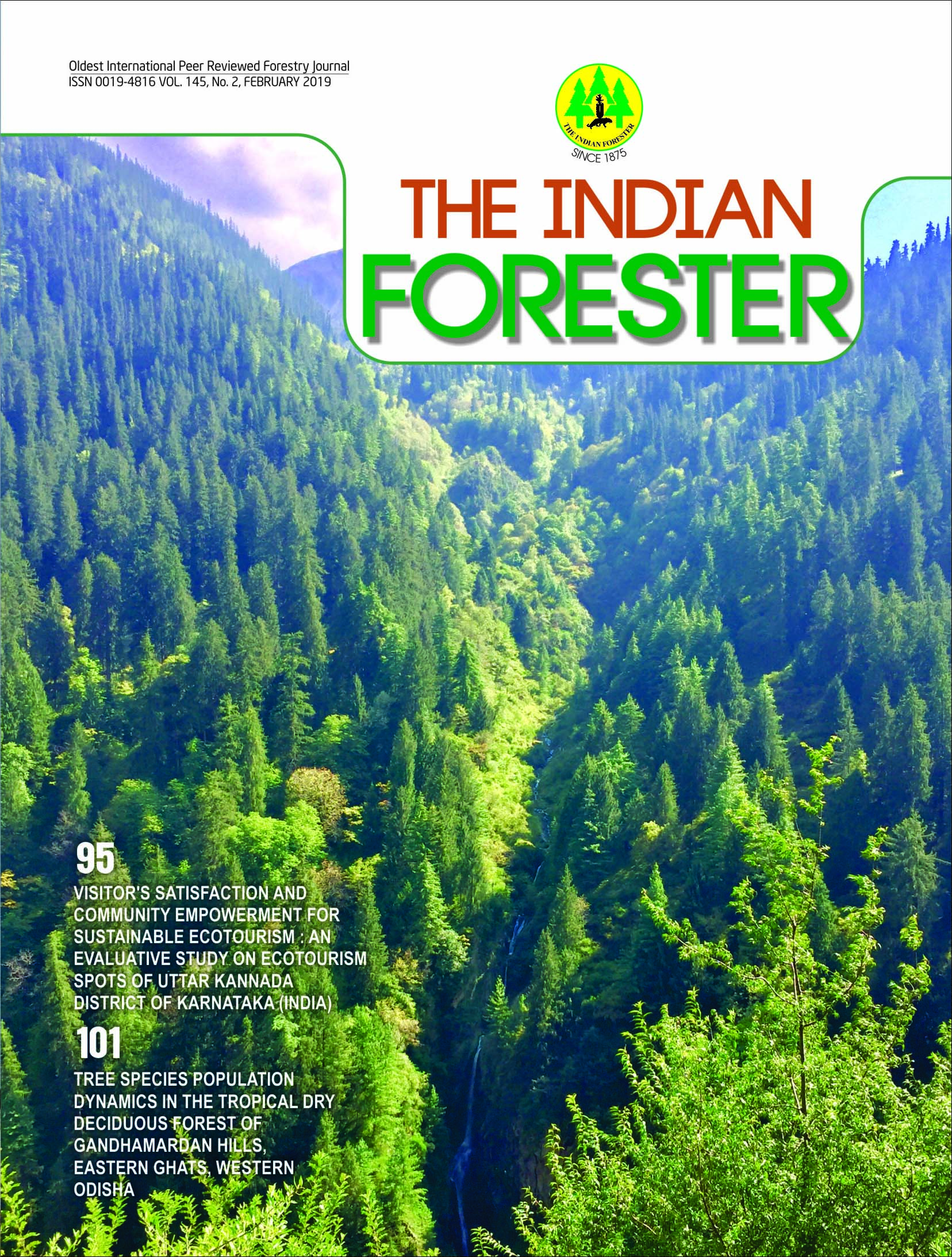Visitor's Satisfaction and Community Empowerment for Sustainable Ecotourism: An Evaluative Study on Ecotourism Spots of Uttar Kannada District of Karnataka (India)
DOI:
https://doi.org/10.36808/if/2019/v145i2/144258Keywords:
Ecotourism, Village Forest Committee, Western Ghats, Tourist Pressure Index.Abstract
The present study was carried out in the selective spots of Uttara Kannada in Western Ghats from June 2014 to May 2015. The study made significant observations regarding the tourism facilities at spot, the problems encountered and satisfaction level of tourists and provided the setting for analyzing the impact of ecotourism in Uttar Kannada and study revealed that ecotourism occupies a significant position in the overall tourism development in this district and has an immense ecotourism potential. High TPI scores relates to higher potential pressure from tourism. Low values for S.C.T R and W are likely to attract tourists to spots as they represent the accessibility and comfort afforded to tourists. In contrast low values for P, R and A have negative effect on potential collision, as each has the potential to reduce tourist motivation to visit spot. Participation of the local communities ensures economic benefits for them, which in the longer run can ensure a better status and an easier life. The study concluded that the ecotourism plays a remarkable role in the overall tourism development and also helps in uplifting the economic conditions of the local people.References
Bhatia A.K. (1983) Tourism Development, Principles and Practices Stirling Publ. New Delhi. 37p.
Epler Wood M.E. (2002) Ecotourism: Principles, practices and policies for sustainability UNEP-TIES, United Nations Publ. 58 p.
Fox M. (1977). The social impact of tourism: a challenge to researchers and planners. In: B.R. Finney and A. Watson (Eds). A new kind of sugar: tourism in the pacific. Santa Cruz: Centre for South Pacific Studies, University of California, 2748 pp.
Goodrich J.N. (1997). Nature tourism: Managing for the environment. J.Travel Research. 35:94.
Hadwen W.L. and Arthington A.H. (2003). The significance and management implications of perched dune lakes as swimming and recreation sites on Fraser Island, Australia. The J. Tourism Studies, 14(2):35-44.
Hadwen W.L., Paul I.B. and. Arthington A.H. (2012). Aquatic ecosystems in inland Australia: tourism and recreational significance, ecological impacts and imperatives for management. Marine and Freshwater Research, 63:325-340.
Hadwen W.L., Arthington A.H. and Mosisch T.D. (2003). The impact of tourism on dune lakes on Fraser Island, Australia'. Lakes & Reservoirs: Research and Management, 8:15-26.
Kozak M. (2001). A Critical review of approaches to measure satisfaction with tourist destinations. In: Consumer Psychology of Tourism, Hospitality and Leisure (Mazanec. J. A. Crouch, G.I. Ritchie. J. R. B. Wood side, A. G. eds.), Vol. (2) CABI Publ. New York, 303-319 pp.
Mahalakshmi V. and P. Stanley Joseph Michal Raj. (2016). Impact of tourism in India. Inter. J. Scientific Engineering and Applied Science, 2(1):167-184.
Mossberg (1995). Tour Leaders and their importance in charter tours. Tourism Management, 16(6):437-445.
Newsome D., Moor S.A. and Dowling R.K. (2002). Natural area tourism: Ecology, impacts and management. Clevedon, UK; Channel View Publ. 39p.
Niesenbaum R.A. and Gorka B. (2001). Community based eco-education. Sound ecology and effective education. The J. Envir. Education, 33 (1):12-16.
Tiancole S., Crompton J. and Willson V. (2002). An Empirical investigation of the relationship between service quality. satisfaction and behavioral intensions among visitors to a wildlife refuge. J. Leisure Research, 34 (1):1-24.
Weaver D. and Oppermann M. (2000). Tourism Management towards the New Millenium. Elsiever Publ. New York. USA. 47p.
Yuksel A. (2001). Managing customer satisfaction and retention. A case of tourist destination, Turkey. J. Vacation Marketing, 7 (2):153-168. www.aranya.gov.in
Downloads
Downloads
Published
How to Cite
Issue
Section
License
Unless otherwise stated, copyright or similar rights in all materials presented on the site, including graphical images, are owned by Indian Forester.





